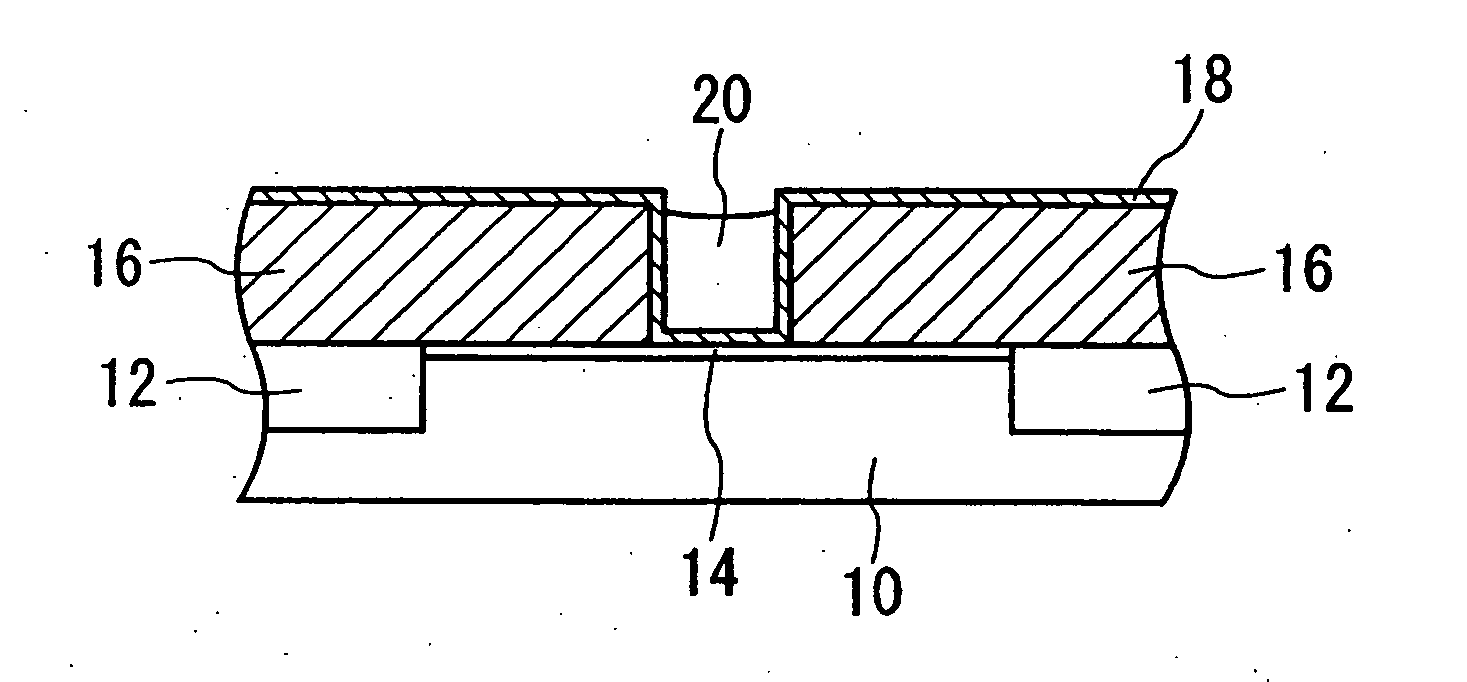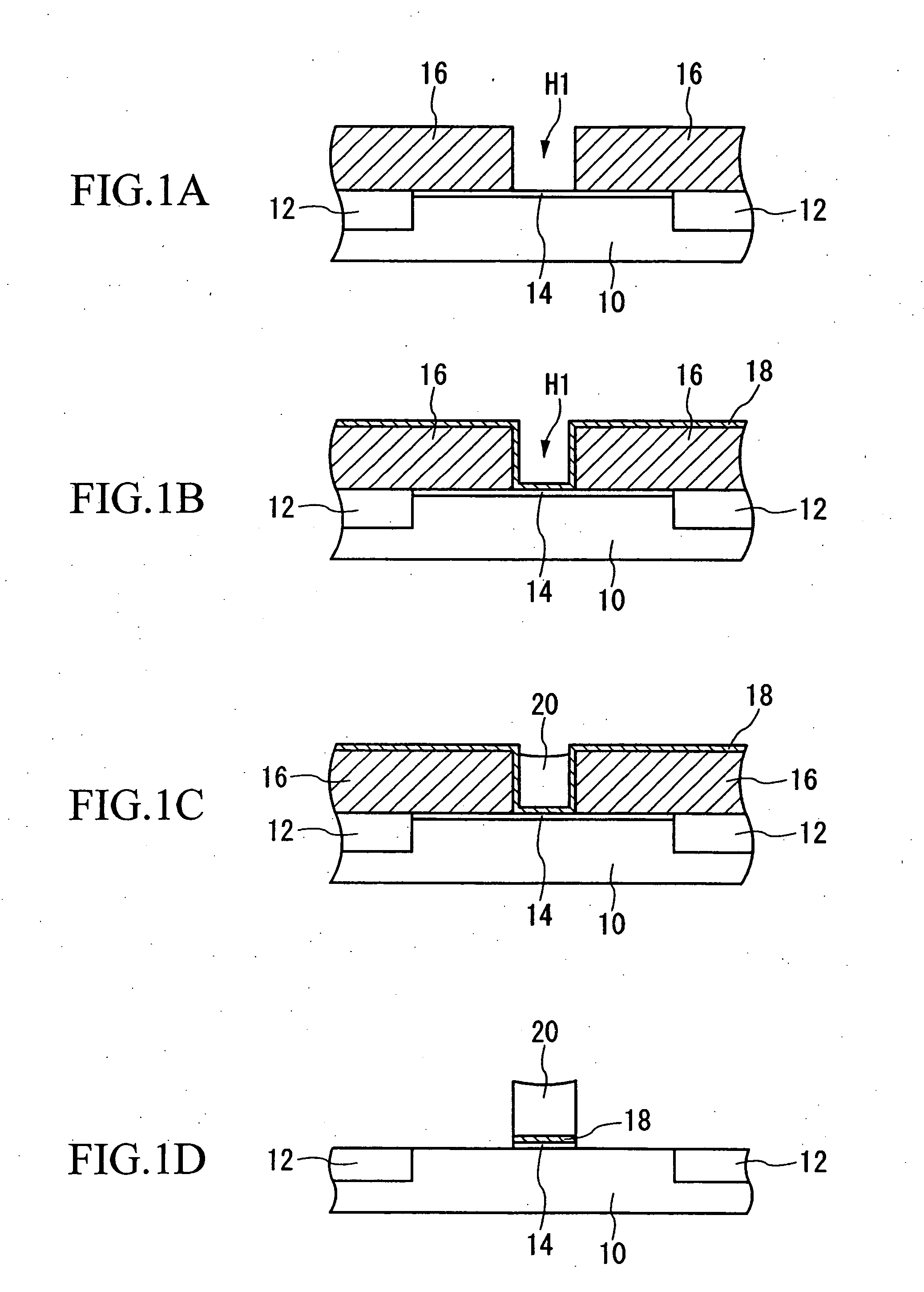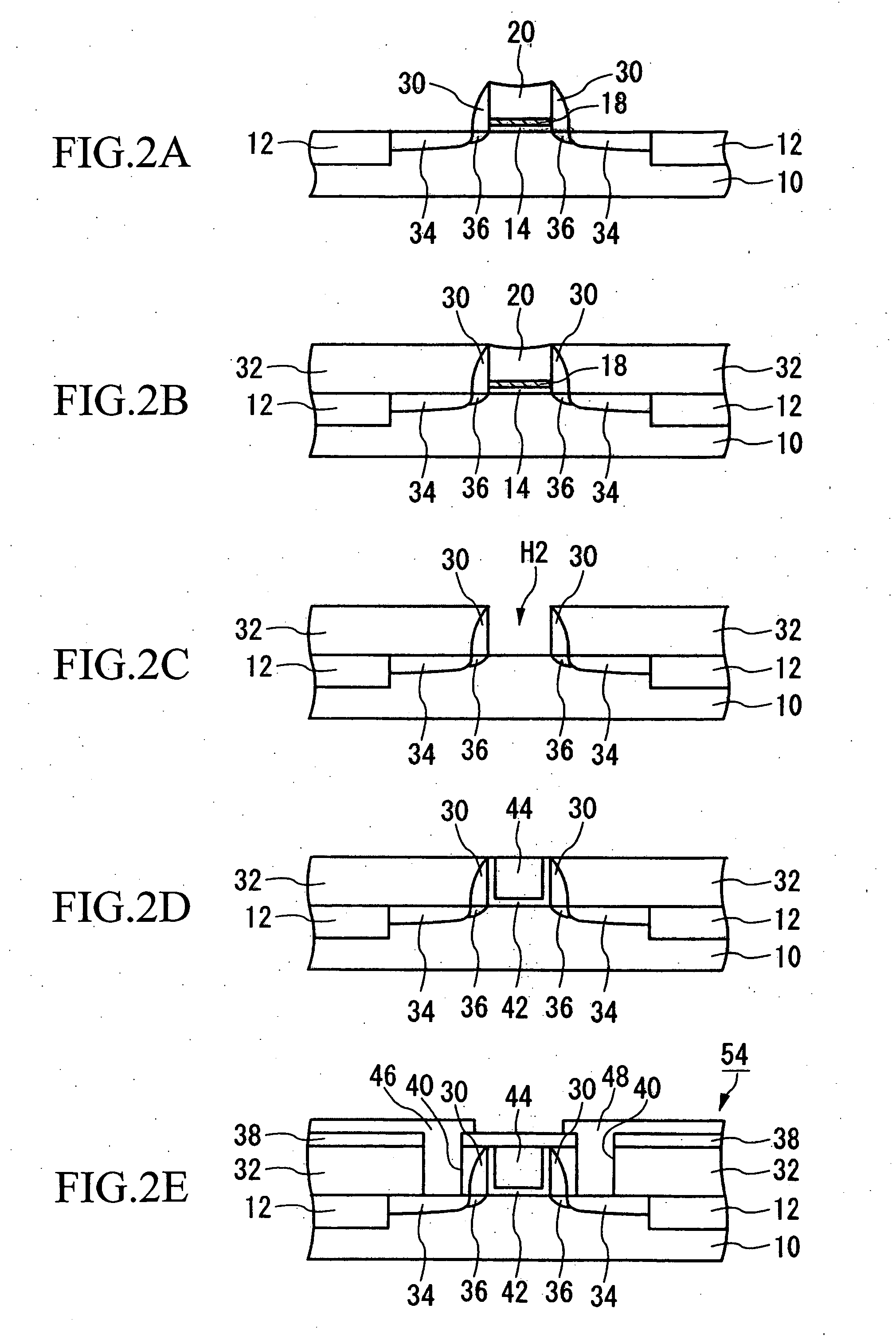Semiconductor device manufacturing method
- Summary
- Abstract
- Description
- Claims
- Application Information
AI Technical Summary
Benefits of technology
Problems solved by technology
Method used
Image
Examples
Embodiment Construction
[0030] Below, aspects of the invention are explained, referring to the drawings.
[0031] In one aspect, processes to manufacture a MOSFET having an LDD structure are explained, referring to the drawings. First, the processes to form a dummy gate pattern for use as a mask, when implanting impurities into silicon substrate in a prescribed concentration, are explained in detail. In each of the drawings used in the following explanation, the scales of the various members have been modified appropriately to a size enabling visual identification of the members.
[0032] -Method of Formation of Dummy Gate Pattern-
FIGS. 1A to 1D are cross-sectional views showing the processes for formation of a dummy gate pattern in this aspect.
[0033] First, as shown in FIG. 1A, a device separation film 12 is formed, to provide electrical insulation between adjacent devices. Specifically, a reactive ion etching (RIE) method or similar is used to form a shallow trench portion in the silicon substrate 10. This...
PUM
 Login to View More
Login to View More Abstract
Description
Claims
Application Information
 Login to View More
Login to View More - R&D
- Intellectual Property
- Life Sciences
- Materials
- Tech Scout
- Unparalleled Data Quality
- Higher Quality Content
- 60% Fewer Hallucinations
Browse by: Latest US Patents, China's latest patents, Technical Efficacy Thesaurus, Application Domain, Technology Topic, Popular Technical Reports.
© 2025 PatSnap. All rights reserved.Legal|Privacy policy|Modern Slavery Act Transparency Statement|Sitemap|About US| Contact US: help@patsnap.com



